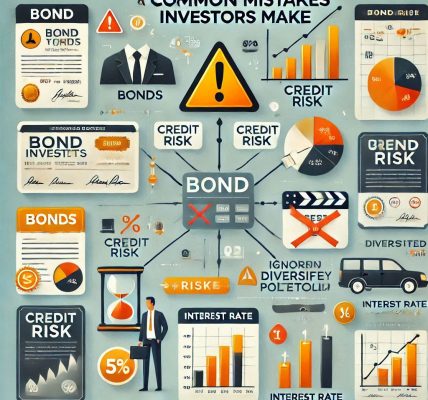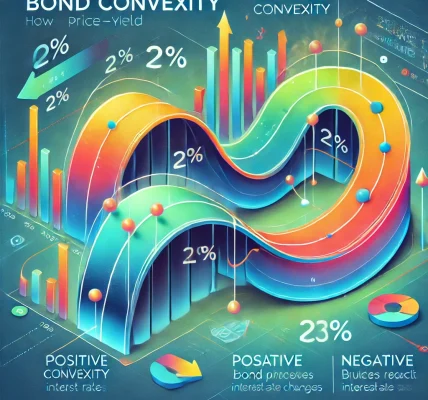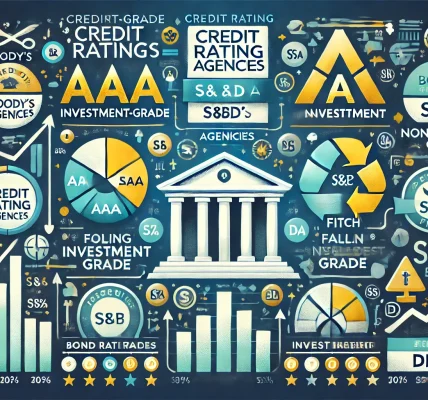Introduction
Bonds are a popular investment vehicle due to their relatively stable returns and lower risk compared to stocks. However, one of the key factors that can significantly impact bond prices is changes in interest rates. Whether you’re a seasoned investor or just starting to explore bonds, understanding how bond prices react to interest rate changes is crucial for making informed investment decisions. In this blog, we’ll break down the relationship between bond prices and interest rates, and why it matters to investors.
Understanding the Bond Price-Interest Rate Relationship
Before diving into the specifics, let’s first understand the basic mechanics of bonds. A bond is essentially a loan you give to a government, municipality, or corporation in exchange for periodic interest payments and the return of the principal at maturity. The interest rate on the bond, also known as the coupon rate, is fixed at the time of issuance.
However, the price of a bond in the secondary market (after it has been issued) fluctuates based on several factors, and one of the most influential factors is the change in interest rates set by central banks.
The Inverse Relationship Between Bond Prices and Interest Rates
Bond prices and interest rates share an inverse relationship, meaning when interest rates rise, bond prices fall, and when interest rates fall, bond prices rise. Let’s break down this concept further:
- When Interest Rates Rise
- If interest rates in the broader economy rise (e.g., when the central bank hikes rates), newly issued bonds will offer higher coupon rates to match the prevailing interest rates. As a result, existing bonds with lower coupon rates become less attractive because they offer lower returns compared to new bonds. To make these older bonds competitive, their prices must fall.
- Example: If you hold a bond with a 3% coupon rate, but interest rates in the market rise to 5%, your bond becomes less attractive. To sell it, you’ll need to lower the price to make it appealing to buyers who can purchase newer bonds with higher yields.
- When Interest Rates Fall
- Conversely, when interest rates decrease (e.g., when the central bank cuts rates), existing bonds with higher coupon rates become more attractive to investors because they offer better returns than new bonds being issued at lower rates. As a result, the prices of existing bonds rise as demand increases.
- Example: If you hold a bond with a 6% coupon rate, but the market interest rates fall to 4%, your bond becomes more attractive because it pays a higher yield than new bonds. The price of your bond will rise as more investors seek to buy it.
Why Does This Happen?
The reason for this inverse relationship lies in how bonds are priced in the market. Bond prices are determined by the present value of the future cash flows (interest payments and principal repayment). When interest rates rise, the present value of future payments decreases, which causes the bond’s price to fall. On the other hand, when interest rates decline, the present value of future payments increases, driving bond prices higher.
Here’s a simplified example to illustrate the concept:
- If you purchase a bond paying $50 in interest annually (at a coupon rate of 5%) and the interest rates rise to 6%, your bond’s fixed coupon payments are now worth less in comparison to new bonds paying $60 annually. This makes your bond less valuable, and the price falls.
- Conversely, if rates fall to 4%, your bond paying $50 annually becomes more valuable, as it offers a higher return than new bonds. The price of your bond increases.
Other Factors That Can Influence Bond Prices
While interest rates are a primary factor in determining bond prices, other elements can also play a role in affecting the value of a bond:
- Inflation
- Inflation erodes the purchasing power of future bond payments, which can negatively affect bond prices. When inflation rises, the real return on bonds declines, causing investors to demand higher yields, which drives prices down.
- Credit Risk
- The risk associated with the issuer of the bond (e.g., a company or government) also affects bond prices. If the issuer’s creditworthiness deteriorates, the bond’s price will likely drop, and its yield will rise.
- Economic Conditions
- Overall economic conditions also affect interest rates and bond prices. In a strong economy, interest rates may rise as central banks aim to control inflation, which can lower bond prices. In a weaker economy, interest rates may be cut to stimulate growth, leading to rising bond prices.
How Bond Investors Can Benefit from Understanding Interest Rate Movements
For bond investors, understanding how interest rates affect bond prices is crucial for managing risk and making profitable investment decisions. Here are a few ways investors can benefit:
- Yield Curve Analysis
- Investors often monitor the yield curve, which plots the yields of bonds with different maturities. A steepening yield curve (where long-term rates are significantly higher than short-term rates) may indicate a rising interest rate environment, which could lead to falling bond prices. Conversely, a flattening yield curve may indicate falling rates, which could drive bond prices higher.
- Duration and Interest Rate Sensitivity
- The longer the maturity of a bond, the more sensitive it is to interest rate changes. Bonds with longer durations (i.e., bonds with longer maturity dates) will experience greater price fluctuations when interest rates change. Investors seeking to mitigate interest rate risk may choose shorter-duration bonds, which are less affected by rate changes.
- Bond Laddering Strategy
- Investors can use a bond laddering strategy, which involves holding bonds of varying maturities. This strategy helps reduce the impact of interest rate changes, as bonds in the ladder mature at different times, allowing investors to reinvest in new bonds with favorable rates.
Conclusion
Interest rates play a significant role in determining the price of bonds, and understanding this relationship is vital for successful bond investing. As a general rule, when interest rates rise, bond prices fall, and when interest rates fall, bond prices rise. By staying informed about interest rate trends and using strategies like duration management and bond laddering, investors can better navigate the fixed-income market and make more informed investment decisions.
Call to Action: Are you ready to incorporate bonds into your investment strategy? Make sure you understand how interest rates can impact bond prices and how you can manage the risks involved. Whether you’re new to bond investing or looking to refine your strategy, take the time to assess interest rate trends and adjust your portfolio accordingly.
SEO Keywords: bond prices, interest rates, bond investing, fixed income, bond price changes, interest rate impact, bond market, bond price inverse relationship, bond duration, bond laddering strategy, inflation and bond prices.
This blog is designed to be SEO-friendly, informative, and engaging for readers interested in understanding how interest rates affect bond prices. Let me know if you’d like any further adjustments or additions!




